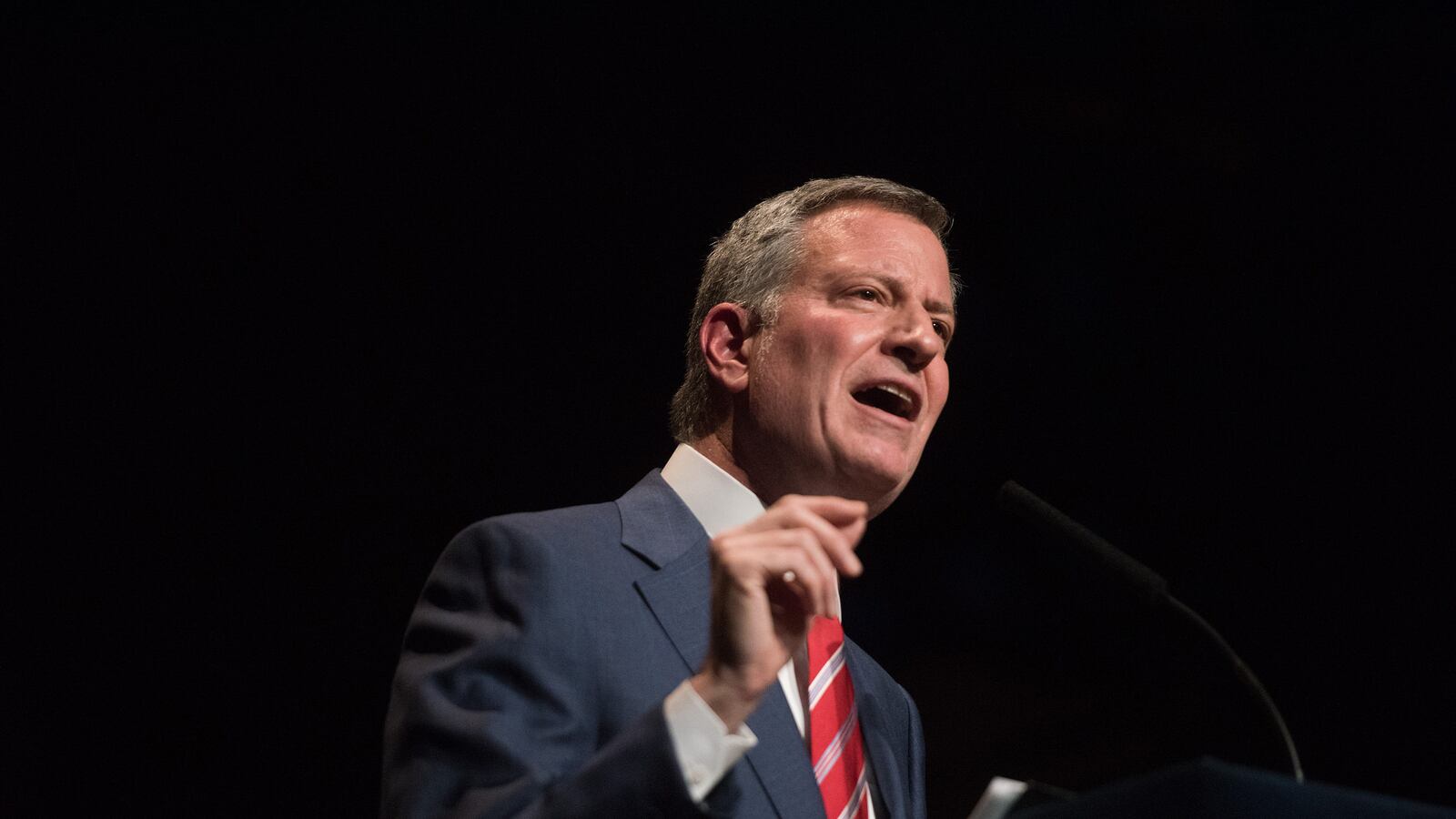The country’s largest school district is also its biggest outlier when it comes to closing schools in an effort to contain the new coronavirus.
All but a handful of the nation’s 30 largest school systems are closed next week because of the virus.
Nevada’s Clark County, which is the fifth-largest district in the country, remains open as does Hawaii, the 12th-largest. Dallas, which is No. 16, is currently closed because of its previously scheduled spring break.
That leaves just one other district: New York City, which serves 1.1 million children.
Mayor de Blasio has suggested New York City is not unique in keeping schools open — though it is the only one among these few districts that has a large cluster of confirmed coronavirus cases in the area.
The city reported its first death due to severe complications from COVID-19, that of an elderly woman with advanced emphysema, who was admitted to the Brooklyn’s Wyckoff Medical Center last week. There were 183 confirmed cases of the coronavirus in New York City as of Saturday afternoon, according to a tweet from City Council Speaker Corey Johnson.
That compares to 16 confirmed cases in Clark County, according to reports. The school district there serves roughly 326,000 students, making it less than one-third the size of New York City’s school system.
Some of the closures of large school districts are the result of statewide orders, as in Illinois, Pennsylvania, and Florida. Almost all have made the decision to close for two to three weeks, and others have extended their spring breaks. Many have high rates of low-income students and have arranged for emergency meal programs for those who need it. (Districts in Los Angeles and Chicago, for example, have higher poverty rates than does New York City.)
Pointing out that many other large American districts have shuttered, “why not close the schools?” MSNBC host Joy Reid asked on Saturday.
“First, I don’t believe we’re unique,” de Blasio responded. “I think a lot of cities and states are grappling [with] this right now.”
The mayor said he was worried about a “cascading effect” of a system-wide closure.
“How do you keep your hospital system and your health care going?” he said. “You’re not going to have a functioning health care system if the folks in the medical field, the doctors, the nurses, the techs, everyone has to stay home with their kids.”
The mayor previously pointed to new guidance from the federal Centers for Disease Control and Prevention, which said the spread of COVID-19 might not be slowed by shorter-term school closures of just a couple weeks. He also earned support from the 1199SEIU, the union that represents healthcare employees, whose members called for schools to remain open for those who need childcare.
Several local elected officials have proposed closing schools and offering scaled-down operations, along the lines of the city’s summer school model instead, where the most vulnerable students could be fed and where children of healthcare workers could attend.
Chicago, for instance, will coordinate food distribution centers and run drop-off child care programs at 18 parks. On Monday, schools will send home packets of school work with students to help their families during the two-week shutdown.
While de Blasio has repeatedly said schools will remain open, both the city and state are preparing for closures or large numbers of no-shows, since many parents are taking matters into their own hands and keeping their children home. The state education department is now providing districts throughout the state guidance on how to establish a summer school meals program, said Brooklyn City Councilman Mark Treyger, who chairs the education committee.
“To be clear, they haven’t ordered a shutdown. But, they’re providing guidance on how to immediately establish a summer school meals program now in the event of a shutdown,” Treyger tweeted. “This is noteworthy and important.”
In a conference call with principals Friday morning, city officials stressed that schools would remain open, but said that educators should start using weekly professional development time to prepare lessons for students who have chosen not to attend school.
That’s on top of the waves of guidance that have flooded principals’ inboxes, though some school leaders said there is inconsistent follow-through on adapting to the changes.
The ramped-up cleaning procedures aren’t happening and additional supplies for the school nurse haven’t materialized, for instance, at Metropolitan Expeditionary Learning School in Forest Hills, Queens, said Pat Finley, one of the co-principals of the middle and high school.
School leaders have been struggling with another impending dilemma: Substitute teachers have been unwilling to take assignments if teachers call off from work. Teacher absenteeism increased slightly last week, and some educators are calling for a sickout if schools don’t close.
“Everything’s being pushed downhill” to principals, Finley said.
“It’s up to the school leader to message out to different constituencies what needs to be done,” he said. “But it’s unclear what’s happening or what the accountability is when they’re not done.”
Editor’s note: North Carolina announced a statewide closure after this story was initially published.

